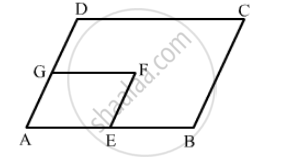Advertisements
Advertisements
प्रश्न
Which of the following statement true for a square?
Its diagonals are equal to its sides.
उत्तर
False
This is because the hypotenuse in any right angle triangle is always greater than its two sides.
APPEARS IN
संबंधित प्रश्न
In the following figure, ABCD and AEFG are parallelograms. If ∠C = 55°, what is the measure of ∠F?

Which of the following statement is true for a rectangle?
It has all its sides of equal length.
Which of the following statement is true for a rectangle?
Its diagonals bisect each other.
Which of the following statement is true for a square?
It is a rectangle.
State with Reason Whether the Following Statement is ‘True’ Or ‘False’.
Every rectangle is a parallelogram.
Draw a rectangle ABCD such that l(AB) = 6.0 cm and l (BC) = 4.5 cm.
Show that the bisectors of angles of a parallelogram form a rectangle
For which of the following figures, diagonals are equal?
A parallelogram PQRS is constructed with sides QR = 6 cm, PQ = 4 cm and ∠PQR = 90°. Then PQRS is a ______.
If diagonals of a quadrilateral are equal, it must be a rectangle.
